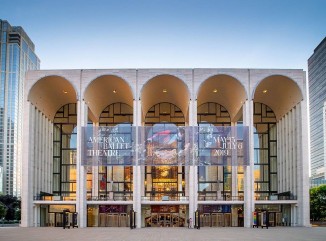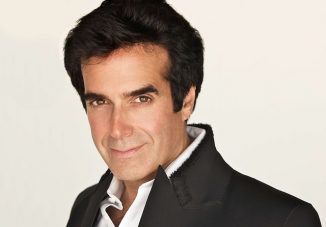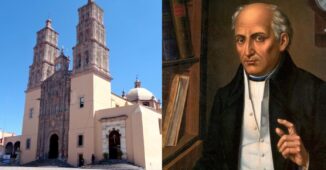36 years ago today, the first international climate agreement was signed in the form of the Montreal Protocol to repair the hole in the ozone layer. Numerous chemicals and practices are responsible for the hole, and the protocol aimed at reducing or eliminating the use of these things. And it worked. Scientists recently determined that on current trajectory, the hole in the ozone layer will be closed by 2080. READ a bit more… (1987)

Former UN Secretary-General Kofi Annan stated that “perhaps the single most successful international agreement to date has been the Montreal Protocol”.
The treaty is structured around several groups of halogenated hydrocarbons that deplete stratospheric ozone. All of the ozone-depleting substances controlled by the Montreal Protocol contain either chlorine or bromine (substances containing only fluorine do not harm the ozone layer).
On 1 January 2019, the Kigali Amendment to the Montreal Protocol came into force. Under the Kigali Amendment countries promised to reduce the use of hydrofluorocarbons (HFCs) by more than 80% over the next 30 years.
MORE Good News on this Day:
- B.B. King, the quintessential blues musician, singer, songwriter, and virtuoso guitarist, was born—and when Riley B. King died in 2014, he was still performing for audiences (1925)
- Sam Rayburn was elected Speaker of the US House of Representatives, widely regarded as the most effective Speaker of the House in history (1940)
- Papua New Guinea gained its independence from Australia (1975)
- The Montreal Protocol was signed by two dozen countries to stop depletion of the Earth’s ozone layer by reducing emissions of harmful chemicals (1987)
- Apple Computer announced that Steve Jobs had been invited back and reinstated as CEO, marking the beginning of the company’s emergence as the indisputable leader in portable digital devices—by unveiling the iPod, iPhone and iPad on its journey to becoming the most profitable company in the world (1997)
57 years ago today, the Metropolitan Opera House opened at the Lincoln Center on Broadway and Lincoln Square on the Upper West Side of Manhattan, New York City. Back then, it opened its doors and its curtains for the first time to Franco Zaffirelli’s Antony and Cleopatra. Today it’s one of the most prestigious opera houses in the world, as well as the biggest among those that actively host operas, and remains a constant on touring schedules for the largest productions.

Rockefeller Center architect Wallace Harrison was approached in the 1950s by officers of the New York Philharmonic Society and the Met to develop a new Met Opera after John D. Rockefeller demolished the old one.
After a long process of redesigns, revisions, and opposing interests (provided by the Met wanting a more traditional design for its home, and the conflicting wishes of the architects of the other Lincoln Center venues), construction of Harrison’s forty-third design of the Metropolitan Opera House began in the winter of 1963, the last of the three major Lincoln Center venues to be completed.
The Met is one of the most technologically advanced stages in the world. Its vast array of hydraulic elevators, motorized stages, and rigging systems have made possible the staging requirements of grand opera, including mammoth productions like Wagner’s Der Ring Des Nibelungen, Verdi’s Aida, and Franco Zeffirelli’s 1981 production of La bohème. (1966)
Happy Birthday to actress, writer, and director Amy Poehler who turns 52 today. After studying improv at Chicago’s Second City with Tina Fey, the Newton, Massachusetts comic moved to New York City where she joined the cast of Saturday Night Live and became co-anchor of Weekend Update.

She left the show to star in Parks and Recreation for 7 seasons for which she won a Golden Globe. One of her best friends, Tina Fey wrote the 2004 film Mean Girls, with Amy in mind to play the audacious “cool mom”. She also co-starred with Tina in Baby Mama, Sisters, and in Poehler’s 2019 directorial debut Wine Country, on Netflix. The screenplay was loosely based on a real trip the actresses took with SNL’s pals Maya Rudolf and Rachel Dratch to Napa Valley. Besides doing a lot of voice work on animated films, she also directed the comedy Moxie about teenage activism. (1971)
 Also, on this day in 1993, Frasier premiered on NBC. The TV sitcom ran for 11 seasons and remarkably won the Emmy for Outstanding Comedy Series for five consecutive years. Created as a spin-off of Cheers, the show focused on the frustrations of the psychiatrist Frasier Crane as he returns to Seattle and builds a new life as a radio advice show host while reconnecting with his salt-of-the-Earth father and pretentious brother. The show starred Kelsey Grammer, Jane Leeves, David Hyde Pierce, Peri Gilpin, and John Mahoney, and won thirty-seven Emmy Awards, breaking the record for a scripted series. Two things you might not know: Christopher Lloyd was a writer and producer on the show, and Grammer sang the show’s theme song, “Tossed Salads and Scrambled Eggs.”
Also, on this day in 1993, Frasier premiered on NBC. The TV sitcom ran for 11 seasons and remarkably won the Emmy for Outstanding Comedy Series for five consecutive years. Created as a spin-off of Cheers, the show focused on the frustrations of the psychiatrist Frasier Crane as he returns to Seattle and builds a new life as a radio advice show host while reconnecting with his salt-of-the-Earth father and pretentious brother. The show starred Kelsey Grammer, Jane Leeves, David Hyde Pierce, Peri Gilpin, and John Mahoney, and won thirty-seven Emmy Awards, breaking the record for a scripted series. Two things you might not know: Christopher Lloyd was a writer and producer on the show, and Grammer sang the show’s theme song, “Tossed Salads and Scrambled Eggs.”

And, on this day in 1946, David Copperfield was born in Metuchen, New Jersey. At age 12, he became the youngest person ever admitted to the Society of American Magicians and by 2013, he had won over 20 Emmy Awards. The high-profile magician became famous for making the Statue of Liberty disappear and appearing to walk through the Great Wall of China. WATCH a video in which he teaches you a magic trick with a dollar bill…
213 years ago today, Father Miguel Hidalgo y Costilla proclaimed his Cry of Dolores for Mexico’s independence from Spain. The speech began the revolt that would achieve that very end, as he rang his church bell and gave the call to arms that triggered the Mexican War of Independence.
Every year on the eve of Independence Day, the President of Mexico re-enacts the cry from the balcony of the National Palace in Mexico City, while ringing the same bell Hidalgo used in 1810, becoming a Father of the Nation.

He served in a church, trying to help the poor by showing them how to grow olives and grapes, but in New Spain (modern Mexico) growing these crops was discouraged or prohibited by the authorities to avoid competition with imports from Spain.
The famous speech called upon the people to protect the interest of their King Fernando VII (held captive by Napoleon) by revolting against the European-born Spaniards. He marched across Mexico and gathered an army of nearly 90,000 poor farmers and Mexican civilians who were poorly armed, but attacked the elites nonetheless—an army of 6,000 well-trained Spanish troops. (1810)
64 years ago today, the first successful photocopier, the Xerox 914, was introduced in a demonstration on live television from New York City. 20 years in the making, the large machine was the brainchild of Chester Carlson who called it electrophotography, which combined photography with electronics in the same machine.
Getting his start at Bell Labs, he was too clumsy for lab work, but came up with the idea for the photocopy machine. The Xerox 914, which could print 7 copies in one minute, was so successful that Carlson became quite wealthy from it, but he was more interested in giving his money away—and as a philanthropist, gave it all away before he died. WATCH a video to see how the traveling light beam works and why the paper is hot when it comes ‘off the press’… (1959)
SHARE the Memories, Milestones, and Movies…





















[…] By Good News Network […]